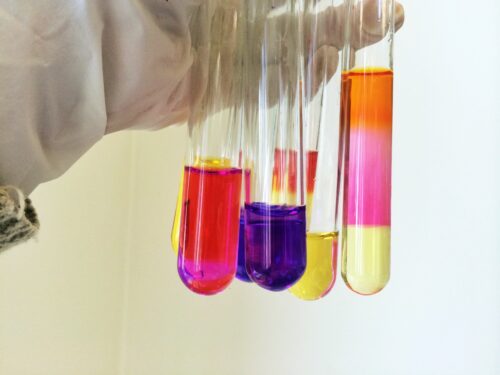Image courtesy of Wikimedia Commons.
Miscibility, or the ability for liquids to mix, is often determined by the “like-dissolves-like” rule, which is largely qualitative. It remains difficult to quantitatively determine how “alike” two substances are. But by using the dielectric constant, Bilin Zhuang, an assistant professor at Yale-NUS, developed a model that accurately predicts the miscibility of two liquids using their permanent dipole moments, which arise from differences in electronegativity across a molecule.
The dielectric constant is a number assigned to a substance based on how polarized it becomes in an electric field. A molecule with a high dielectric constant has higher polarity and a greater ability to stabilize charges in an electric field. Materials with similar dielectric constants often mix well. Zhuang’s model also uses the free energy of mixing to predict miscibility of two liquids. This model accurately fits experimental data when compared to previous theories that use a similar number of parameters.
However, these new equations are unable to account for hydrogen bonding, which leads certain liquids to adopt conformations that the dielectric constant does not predict. Zhuang’s next steps will focus on developing miscibility predictors for hydrogen bonding liquids and polarizable liquids, substances with no permanent dipoles.
Ultimately, these new equations will be particularly useful for predicting the miscibility of newly synthesized molecules. It also saves time at the bench when one studies multi-component mixtures. “We can just plug in the number and roughly see what the dielectric constant is [and] its miscibility,” Zhuang said.
Sources:
Zhuang, B., Ramanauskaite, G., Koa, Z. Y., & Wang, Z.-G. (2021). Like dissolves like: A first-principles theory for predicting liquid miscibility and mixture dielectric constant. Science Advances, 7(7), 1–7. https://doi.org/10.1126/sciadv.abe7275

